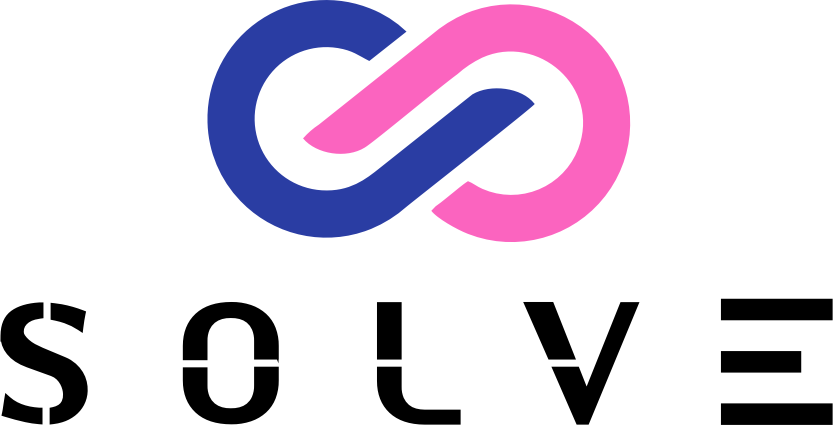- By Vanshika Choudhary
- June 11, 2025
The year 2025 is already approaching, and it is going to be a great time to start a blog or a personal website just to share your ideas build your brand, and maybe even set up a business. Nowadays creating an elegant-looking site does not require any technical training, thanks to all the modern tools and platforms at your disposal.
Choosing Your Blog Topic and Purpose
Your topic and purpose are the identity of your blog. Choosing the right one ensures long-term motivation that assists you in luring in the target audience.
Discover Your Interests and Expertise
Begin by making a list of what you feel strongly about, are good at, or would like to learn more about. Think of things related to your hobbies, working background, or life experience that is special to you. The topic you choose should be something you want to do because you will have to keep creating content for a long time even through slow growth periods. Remember, blogging is a long-term journey, and you’ll require the drive to see it through.
Research Your Audience
After narrowing down your interests, it is now time to research what the general public is actually searching for in the online marketplace and nation. Browse other blogs, forums, and social media groups related to your topics. Find out the common questions, hyped topics, and content vacuums. This kind of research helps you determine exactly what the readers want, so your blog caters to real needs and stands out among the many.
Define the Purpose of Your Blog
Clarify why it is that you want to start a blog. Will the site educate, inspire, entertain, or just be a humorous account of one’s life? This clear purpose will be the foundation of all your content and will help you find readers whom you want to reach with your goal. A site covering help for beginners to learn a skill has an entirely different voice and structure than a personal travel journal.
Check for Uniqueness
Analyze what it is that sets your point of view apart from others. Maybe your approach is different, or you come from a different background, or you can target a particular niche segment. Your offering includes your strength in the blogging world and allows you to create loyal readers who cannot find the same value anywhere else.
Setting Up Your Blog: Domain, Hosting, and Platform
The technical side of the blog can open once you get your topic ready. This step is of utmost importance to having a professional and dependable online presence.
Select and Register Domain Name
The domain is just another web address for your blog (like yourblog.com). Keep it short and easy to remember with something to do with your topic or brand. Don’t ever try using very complicated spellings or hyphens that could confuse your visitors. Use domain searchers to check if yours is available and opt for alternatives if the first choice has already been taken. Register for the domain from a good registrar who may offer hosting.
Select the Hosting Provider
Hosting means storing your files and making them accessible on the internet. Therefore, an excellent hosting provider should have a reputation for reliability, fast load time, and strong technical customer support. Some bonuses to consider would be a free SSL certificate, WordPress one-click install, and backups on autopilot. With such hosts, you can always depend on your site to be online and secure building trust and connection with an audience.
Pick a Blogging Platform
The most highly used platform that remains flexible, WP offers everything. Yet Wix, Squarespace, and Webflow are all user-friendly. Technical skills are what you want, features you desire, and budget considered. WordPress offers practically limitless flexibility and plugin support, whereas builders offer drag and drop. Check out our latest blog post on What Is Responsive Design and Why Does It Matter?
Set Up Security and Privacy
SSL will encrypt the site and client’s valuable data, in addition to benefitting search ranking. Most of the hosts do indeed provide free SSL certificates; in some rare cases, they may charge for it. Another thing you can consider enabling is domain privacy protection so that your personal details do not become publicly available in databases. Protection of your admin area with the strongest passwords and two-factor authentication is important so that others may not gain access.
Designing and Customizing Your Blog
A professional design creates an impression that remains, keeping the visitors engaged. Luckily, you do not have to be a designer, as all modern platforms offer hundreds of templates and customization options.
Choose a Professional Template
Start from a template that fits your blog style and that fulfills its purpose. Look for a clean layout, mobile responsiveness, and easy navigation options. Using a template can also save you time while making sure that your design looks stylish on all devices.
Customizing Your Layout and Branding
Arrange your menu so that visitors find all information about posts, the About page, and the Contact page comfortably. Consistent branding throughout your blog will help build trust in the eyes of visitors and set you apart.
Start Creating Some Essential Pages
Every blog must have an About page where the blogger introduces themselves and their mission, a Contact page to facilitate readers contacting them, and legal speak for a Privacy Policy. The About page almost fills the gap for a personal connection, while the Contact page calls for feedback and collaboration, and the Privacy Policy guarantees visitors feel safe concerning their data being handled properly. The existence of these pages gives the blog a credible and trustworthy appearance.
A Speedy Site and Accessibility That Goes Global
Image compression, minimal plugin use, and a speedy host all lead to rapid blog loading. For visitors, a slow website is annoying; apart from this, it also hurts your search engine rankings. Have usable fonts with the right contrast and also include alt text for images so everyone can enjoy the blog—for people with disabilities included.
Creating and Publishing Quality Content
Since content is just the soul of a blog, so high-quality, valuable posts will attract readers and retain them and will build your authority within your selected niche.
Plan Your Content Strategy
Determine what type of posts you will create: will yours be how-to guides, listicles, personal experiences, or reviews? Thinking of a content calendar, so to speak, organizes your publishing schedule and will be the key to consistent publications. Planning ahead prevents those gnarly moments of writer’s block and guarantees you always have something to share with your audience.
Write Engaging Blog Posts
Structure each post to include headings, short paragraphs, and bullet points for readability. Keep your content interesting using stories, examples, and visuals like images or infographics. An engaging title and introduction are necessary to grab the reader’s attention, while the content fulfills that promise through an in-depth look into the topic.
Engaging Writing
Structuring posts with clear headings, short paragraphs, and bullet point lists helps readability. To truly engage your readers, however, consider storytelling, illustrations, examples, or visuals such as images or infographic charts. The title and the introduction have to be attention-grabbing to hold the reader, followed by actionable information that is well-researched and what the title promised in the first place.
SEO Optimization
Keywords related to the post should be sprinkled throughout titles, headings, and the body in hopes of securing a second chance at ranking high on search engines. Along with this, write compelling meta descriptions and use internal links to guide the visitors toward related content within your blog. All these SEO steps equate to being seen by the audience and can thus generate organic traffic for your site.
Encourage Interaction
Conclude each post with questions or calls to action that urge readers to comment, share, or subscribe. Respond to comments to nurture the sense of community and present that you really do value the views of your audience. The interaction would be good for engagement and would also give you insights into what matters most to your readers.
Growing Your Audience and Monetizing Your Blog
Once you launch your blog, the next step shall be the attract online traffic and income streams for your efforts.
Promote Your Blog on Social Media
Share the post with Instagram, Twitter, Facebook, and LinkedIn. Also, join some groups and communities to forge a connection with potential readers and collaborators. Create some catchy visuals with captivating captions to grab clicks and shares and take your reach beyond street-level networking.
Build an Email List
Give away a great freebie in exchange for email sign-up such as a checklist, eBook, or exclusive tips. Keep your audience engaged via regular newsletters, sharing updates, new posts, and special offers. An email list provides you with a voice on repeat visits and the power of loyalty building.
Network with Other Bloggers
Make connections within the blogging niche by commenting on posts, collaborating, or guest blogging. Having a set of associates in the blogging world will mellow some opportunities for you, share some audiences, and open up learning experiences. This form of networking is really an energizer. It keeps you motivated and filled with new ideas.
Maintaining and Growing One’s Blog Over Time
A successful blog requires constant attention, adaptation, and improvement to stay relevant and valuable.
Track Your Performance
Keep tabs on traffic, popular posts, and audience demographics using an analytics tool like Google Analytics. Regularly go into your data with deep analysis to understand what is working and what is not, what needs fixing, and where you can push your growth. Decisions backed by data can help you tweak your strategy and put out the best possible content from your blog.
Update Old Content
Updating means providing more recent information, newer images, or more appropriate SEO for the old posts. Maintaining content is crucial for sustaining search rankings, along with ensuring that readers receive the best advice available at that particular moment. Decide to set time aside to update your most important articles.
Stay Consistent and Patient
Blogging is a marathon, not a sprint. Keep on following your publishing schedule and keep molding yourself into a better blogger; do not let slow growth get to your nerves. Success in blogging is a recipe that contains consistency, patience, and the ability to adapt.
Conclusion
It would be a wonderful outlet for expression and building a brand, not to forget the potential of generating cash, to start a blog or personal website in 2025. By following these steps—choosing the subject, setting up the site, creating useful content, and promoting it—anyone can have a blog that is distinctive and gradually grows by itself. Are you ready for that blogging adventure? Get in touch with us today for one-on-one assistance, expert advice, or a step-by-step setup guide. Your voice deserves to be heard—let’s get your blog online now!




